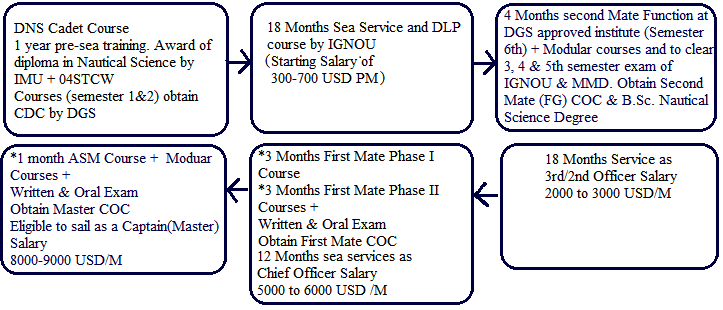
DOWNLOAD ADMIT CARD IMU CET 2024 (Exam Date : 08 June 2024 ) | CLICK HERE |
APPLY ONLINE IMU CET 2024-UG (B.Tech, B.Sc., DNS) and PG Programmes (Apply Date 18-03-2024 to 15-05-2024) | CLICK HERE |
APPLY ONLINE FOR 2024 – 2025 | DECK CADET COACHING | DOWNLOAD DDA PROSPECTUS 2024 – 2025 | MERCHANT NAVY |

Sandeep Sir’s Doon Defence Academy, Dehradun (Uttarakhand) is a leading merchant navy training institute offering merchant navy courses approved by DG shipping Govt. of India. Doon Defence Academy offer excellent coaching classes for Merchant Navy preparation. Join The Merchant Navy After Class 12th in India.
The Merchant Navy is a non-combatant commercial fleet, which deals with transporting cargo and occasionally, passengers, by sea. Its fleet is therefore composed of vessels (ships) such as passenger vessels (called liners/cruisers), cargo liners (also called bulk carriers) which carry cargo or oil tankers (called tankers), as well as other special types of vehicles. Their ships may belong to Indian or Foreign shipping companies. In fact, the Merchant Navy, is the backbone of International trade, carrying cargo across the globe.
Without the Merchant Navy much of the import-export business may grind to a halt. The ships today are highly sophisticated and technology intensive safety and efficiency of the ship are crucial and depends upon the professional ability, competence and dedication to duty, of a sea fairer, onboard the ship. Join Merchant Navy after Class 12th.
************
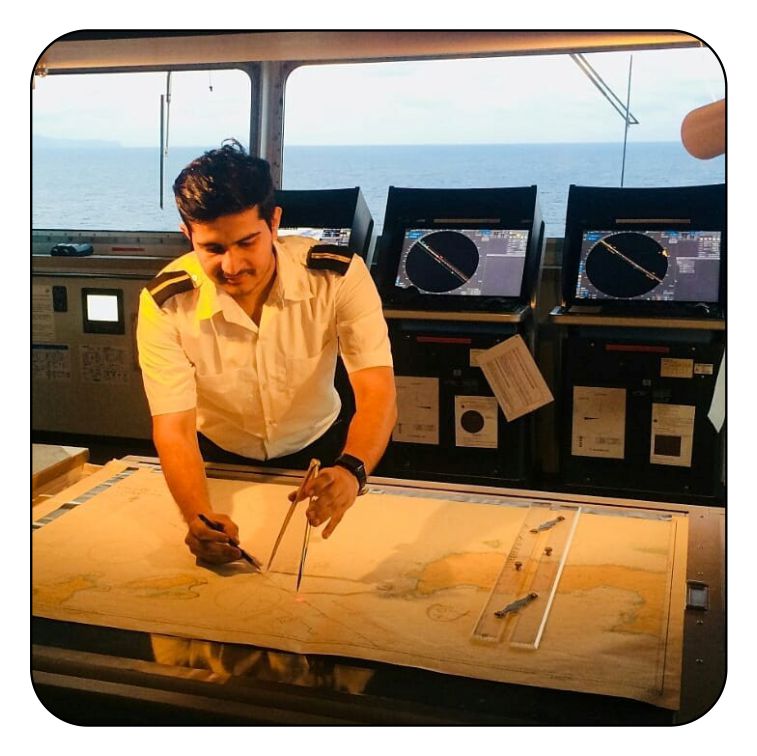
Naturally, a seafarer is expected to be highly professional for the safe and efficient operation of the ship. The training in India is of reasonably high standards and the Indian seafarers are one of the most sought after commodity in the shipping industry worldwide.
Today, there are several opportunities to fetch reasonably good salaries but the Merchant Navy may also offer equally rewarding salaries at a young age. Unfortunately, the knowledge on the subject of “What is Merchant Navy & How does one join it? Still remains the privilege of few people who already have their relatives and friends in this industry. With this in the background some useful information about a career in Merchant Navy is presented herein.
◘ 95% world trade is carried by sea.
◘ Raw material and finished goods are shipped by sea.
◘ Increased movement of goods due to globalization, hence growing the opportunities.
◘ Industry studies indicate that the demand for Indian officers worldwide is a strong and ever growing.
************
About Our Academy
 Located at Opposite Green View Apartments, Near Touch Wood School, Sahastradhara Road, 9.2 km from Railway Station, 14 km from ISBT, 31 km from Airport, North India’s No.1 Coaching Institute “DOON DEFENCE ACADEMY”. It was founded by Sandeep Gupta, a Submariner of Indian Navy (Retd.) in 2005. Since then “DOON DEFENCE ACADEMY” is motivating, inspiring and guiding our young generation to join Merchant Navy. “DOON DEFENCE ACADEMY” is not a Manning Agency OR Maritime Training Institute who provide any certificate courses OR Agent of any Company / Institute. It is just a coaching institute who provides coaching for Written Test (online/offline) and interviews for various opening for Deck Cadets / TME / GME/ SEO etc. “DOON DEFENCE ACADEMY” is a genuine guide in North India for those, who wants to join Merchant Navy after. But apart from Written Test / Interview, “DOON DEFENCE ACADEMY” is also conducting classes for basic knowledge of shipping, which include Seamanship, Ship Constructions, various Duties, Fire Fighting and Fire Prevention, Basic Marine Engineering, Personal Safety and Social Responsibilities, Ship Organization, Basic Terms in Shipping, Types of Ship, Ship Safety and Security, Loyalty towards Ship, Respecting Senior and Do’s and Don’t, in Merchant Navy etc. under the supervision of Experienced Personality drawn from the shipping industries. “DOON DEFENCE ACADEMY” is basically trying to lay down the foundation for becoming a competent Seafarer. The bottom line is that, we at DOON DEFENCE ACADEMY are preparing students up to that level, where he can understand port and starboard instant of left and right and fore and aft instant of forward and backward.
Located at Opposite Green View Apartments, Near Touch Wood School, Sahastradhara Road, 9.2 km from Railway Station, 14 km from ISBT, 31 km from Airport, North India’s No.1 Coaching Institute “DOON DEFENCE ACADEMY”. It was founded by Sandeep Gupta, a Submariner of Indian Navy (Retd.) in 2005. Since then “DOON DEFENCE ACADEMY” is motivating, inspiring and guiding our young generation to join Merchant Navy. “DOON DEFENCE ACADEMY” is not a Manning Agency OR Maritime Training Institute who provide any certificate courses OR Agent of any Company / Institute. It is just a coaching institute who provides coaching for Written Test (online/offline) and interviews for various opening for Deck Cadets / TME / GME/ SEO etc. “DOON DEFENCE ACADEMY” is a genuine guide in North India for those, who wants to join Merchant Navy after. But apart from Written Test / Interview, “DOON DEFENCE ACADEMY” is also conducting classes for basic knowledge of shipping, which include Seamanship, Ship Constructions, various Duties, Fire Fighting and Fire Prevention, Basic Marine Engineering, Personal Safety and Social Responsibilities, Ship Organization, Basic Terms in Shipping, Types of Ship, Ship Safety and Security, Loyalty towards Ship, Respecting Senior and Do’s and Don’t, in Merchant Navy etc. under the supervision of Experienced Personality drawn from the shipping industries. “DOON DEFENCE ACADEMY” is basically trying to lay down the foundation for becoming a competent Seafarer. The bottom line is that, we at DOON DEFENCE ACADEMY are preparing students up to that level, where he can understand port and starboard instant of left and right and fore and aft instant of forward and backward.
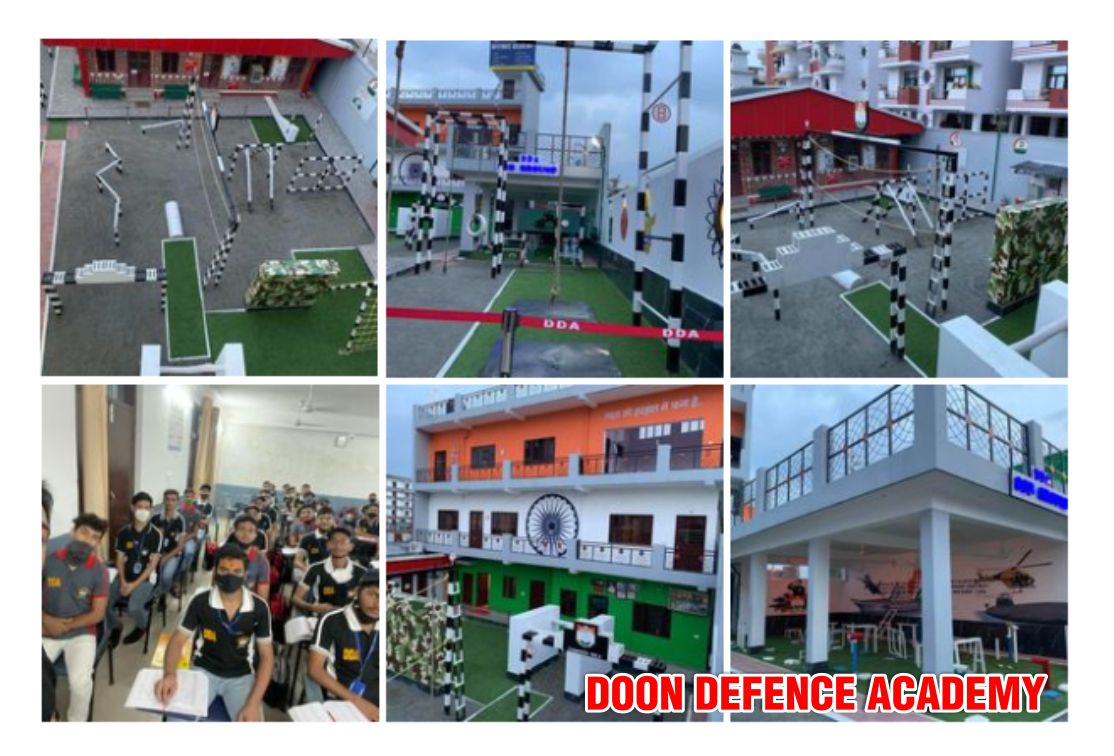
DOON DEFENCE ACADEMY” has a very big infrastructure which include modern classrooms, library, other facilities like Spoken English classes, Motivation Movies, LCD Presentations etc. We are conducting Career Seminar, Counseling Session, Audio – Video Presentation at various schools/seminars for guiding and inspiring the students to join Merchant Navy throughout the year. Every year more than 1000 students are enrolling themselves to our coaching institute for various careers, options after 12th/ B.Sc./B.Tech Every year. With our able guidance so many students selected as a Deck Cadet / TME / GME/ SEO in various Shipping Companies/Institute like Tolani Maritime Institute, RL Institute of Nautical Science, TS Rehman, TS Chanakya, National Maritime University, MMTI, AP Mooler – MEARSK, Anglo – Eastern, Executive Shipping, Shipping Corporation of India (SCI), International Maritime Institute (IMI), Fleet Management, Wilhelmsen(Barber),Ship Management, Univan Shipping, HND Programme etc.
NOTE : Once again we want to bring it to the notice of every person who is concerned with “DOON DEFENCE ACADEMY” that “DOON DEFENCE ACADEMY” is not a lioisoning office/Manning Agency/ Recruitment cell/Maritime Training Institute who is giving any certificate / Agent of any company or Institute. It is a coaching Institute for written Test/Interview for various opening for Deck Cadets/ TME/ GME/SEO. Selection in Merchant Navy is absolutely free and fair. No money is required to be paid to anyone for selection. Please do not be mislead by someone. But as far as training is concerned the cost of training is to be borne by the candidate. For more information about this please contact the concerned authorities or log on www.dgshipping.com.
Careers in the Merchant Navy
The officer from this branch looks after the ships navigation, loading/unloading of cargo and the general maintenance and administration of the ship. After completion of their training as a Deck Cadet, the officer joins in the rank of 3rd officer and subsequently promoted to the rank of the 2nd officer, chief officer and finally the Captain/ Master of the ship. All the promotions are subject to the individual passing his competency exams and his performance on-board the ship.
In addition to navigation duties normally, a 3rd officer looks after the life-saving appliances, the 2nd officer the passage planning and the navigation equipment, the chief officer look after the cargo work, and the Captain/ Master is the overall In-charge of the ship.
The subsequent promotions after acquiring a certificate of competency as second mate (F.G.), an officer is eligible to be appointed as a third or a second officer onboard a merchant ship and would draw a handsome salary for subsequent promotions, he has to render further sea service and progressively pass the higher examination appropriate for that rank viz. First mate (F.G.) and Master (F.G.). The certificate of competency as Master (F.G.) entitles the officers to become the captain of Merchant Navy ships.
A career at sea is very demanding as well as rewarding. It offers a high level of job satisfaction, a wide experience and challenging work environment. Experienced Marine Engineers are in great demand in all industries because of their ability to handle very large power plants, their resourcefulness, sense of responsibility and ability to work with their own hand with almost no external assistance. A Marine Engineer is a very valuable and responsible member of a ship’s team.
He has to operate and controls are engineering systems on-board his ship, and maintain them in good working condition. This gives him tremendous experience and confidence. However it must be understood that the life of a Marine Engineer is tough and not suited for the weak hearted. The ship’s engine room having the Main Engine, Boilers, Pumps, Hydraulic fuel systems, ship electrical generating plant and distribution.
Career Path for Engineer Officer
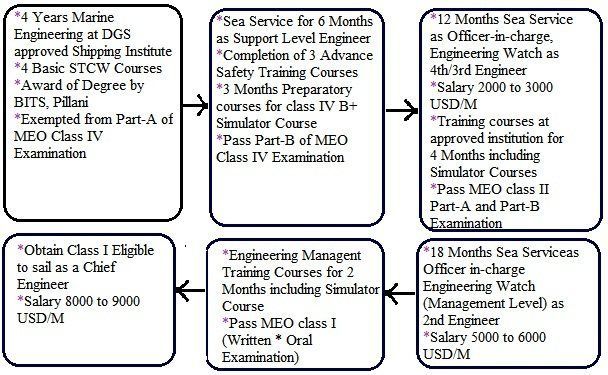
Graduate Mechanical Engineer (GME) – Career prospect: The department of Mechanical Engineering aims to provide the best mechanical engineering inputs to the marine engineers along with broad-based knowledge in practical applications. The job of Mechanical Engineers are contributing following major activities like ship building, workshop activities required in ship repairs like welding, riveting component machining, assembling & dismantling. The Mechanical Engineering department has core laboratories for heat transfer, applied mechanics, fluid machinery, refrigeration and air conditioning control and vibration analysis. The experiments are critically selected so as to cover the entire gamut of marine engineering principles. They have to work with Main Diesel Engines, Auxiliary Engines, Boiler, Purifiers, Pumps and other auxiliary machinery. They are also required to undergo extensive watch-keeping duties in plant operation and safety etc.
Eligibility:
Educational Qualification: Graduate in Mechanical Engineering / Naval Architecture from any Engineering College recognized by AICTE (Ministry of human Resource and Development). Candidate must be in possession of valid Engineering Degree/Provisional Certificate. And must have secured minimum 50% marks in English in 10th or 12th class.
Age: Not exceeding 25 years.
Medical: Medically fit as per the company/regulatory standards. Eyesight 2.0 & No color blindness.
Training Fee: The cost of Pre-sea training will include tuition fees, books, lodging, boarding, uniform etc and will be borne by the candidates. The training fees will be approximately Rs. 4,50,000/- (Rupees Four Lack Fifty Thousand only) and payable directly to the training institute approved by DG Shipping. The fee for the training also depends on the company/Institute and subject to change for more information you can log on www.dgshipping.com.
Training: 01 Year pre-sea training at marine training institute approved by DG Shipping Govt. of India. This training provides a graduate Mechanical Engineer student a sure path to become a qualified Marine Engineer. On Selection, you will be nominated to undergo a 12 months residential per-sea orientation training on Marine Engineering at any chosen maritime training Institute in India. (Delhi, Mumbai, Chennai, Pune etc) At the pre-sea institute, apart from the academics, you will undergo training in workshops and simulators. On successful completion of the course, you will be awarded certificate. On completion of the pre-sea training of 12 months, you will join merchant Naval Vessel as Vth Engineer. You will go on the ship for 8 months and after returning back you can appear in Marine Engineers Officer class IV Exam, conducted by Director General of Shipping. On successful completion of the exam, you will be awarded class IV Certificate of competency by DG of shipping and can join back as the fourth Engineer. You can further appear in promotional exams and rise up to the rank of Chief Engineer who is equal to the rank of captain of the ship.
Career Path for Graduate Mechnical Engineer
Ship’s Electrical Officer (SEO)
Career prospect: Every seagoing vessel must carry at least one Electrical Officer. That is why the department of Electrical is known for one man show (Bhatti Sahab) on board merchant naval vessels. Since SEO is an essential requirement there is a heavy demand in the international shipping industry. The work field of SEO is consisting of working on Main and emergency generator, High voltage generator and system, MSB & Power distribution – Procedures and Practices Power management system, Emergency Switchboard, Local Power Distribution, Emergency power & Shore supply, Other Electrical Machines A.C. Motor Starters, Protection Devices, Marine Electrical Cables, Marine Auxiliaries & Instrumentation Workshop, Electrical Equipment, Galley equipment, Laundry equipment, Practical on ship-board active boiler combustion control system and Full mission, Electromagnetism and AC theory, Basic Electrical concept and fundamental practices, DC Generators, Alternators, Electrical Motors Main and emergency generator, Electrical motors, Transformers, Automation and Instrumentation Familiarization with shipboard PMS. Special electrical practice for oil, gas, and chemical tankers Pneumatic & hydraulic systems etc.
Eligibility:
Educational Qualification:
Degree in Electrical Engineering from a recognized engineering college approved by AICTE (Ministry of human Resource and Development) with minimum 50% marks OR Diploma in Electrical Engineering with Ist class. And must have secured minimum 50% marks in English in 10th or 12th class.
Age:
Not exceeding 25 years.
Medical:
Medically fit as per the company / regulatory standards. Eyesight 2.5 & No colour blindness.
Training Fee:
The cost of Pre-sea training will include tuition fees, books, lodging, boarding, uniform etc. and will be borne by the candidates. The training fees will be approximately Rs. 2.50 Lakhs (Rupees Two Lakhs, Fifty Thousand Only) and payable directly to the training institute.
Training:
06 Months pre-sea training at marine training institute approved by DG Shipping Govt. of India. This training provides a Ship’s Electrical Officer aspirants a sure path to become a qualified Ship’s Electrical Officer. On Selection you will be nominated to under go a 06 months residential pre-sea orientation training on Electrical Engineering at any chosen maritime training institute in India. (Delhi, Mumbai, Chennai, Pune etc.) At the pre-sea institute, apart from the academics, you will under go training in workshops and simulators. On successful completion of the course, you will be awarded certificate. On completion of the pre-sea training of 06 months, you will join Merchant Naval Vessel as Assistant Electrical Officer. After completing your first contact as an Assistant/Trainee Electrical Officer you can sail as an Electrical Officer on your second contract onwards.
************
MERCHANT NAVY COACHING IN DEHRADUN
Eligibility Criteria
Deck Cadet (DGS+ IMU Scheme)-Leading to B.Sc. Nautical Science
 Educational Qualification: Pass/appearing in 10+2 examination from a recognized Board/ University with Physics, Chemistry and Maths (PCM), with not less than 60% marks in PCM.
Educational Qualification: Pass/appearing in 10+2 examination from a recognized Board/ University with Physics, Chemistry and Maths (PCM), with not less than 60% marks in PCM.
OR
with Physics as an individual subject in one of the years of B.Sc. in PCM or Electronics with an average of not less than 50% marks from a UGC/DEC recognized university.
OR
B.E./ B.Tech. Degree from college recognized by AICTE
AND
Should have passed with not less than 50% marks in English as a separate subject at either 10th or 12th standard.
Age: Not more than 25 years.
Medical: Eyesight should be 6/6 with no color blindness.
B.S. Nautical Technology
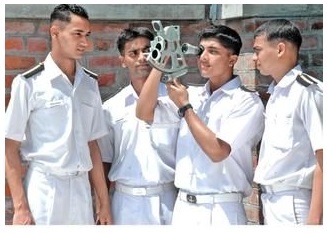 Educational Qualification: Pass/ appearing in 10+2 examination from a recognized Board/ University with Physics, Chemistry and Maths (PCM), with not less than 60% marks in PCM.
Educational Qualification: Pass/ appearing in 10+2 examination from a recognized Board/ University with Physics, Chemistry and Maths (PCM), with not less than 60% marks in PCM.
AND
Should have passed with not less than 50% marks in English as a separate subject at either 10th or 12th standard.
Age: Not more than 25 years.
Medical: Eyesight should be 6/6 with no color blindness.
04 Year Marine Engineering (TME)
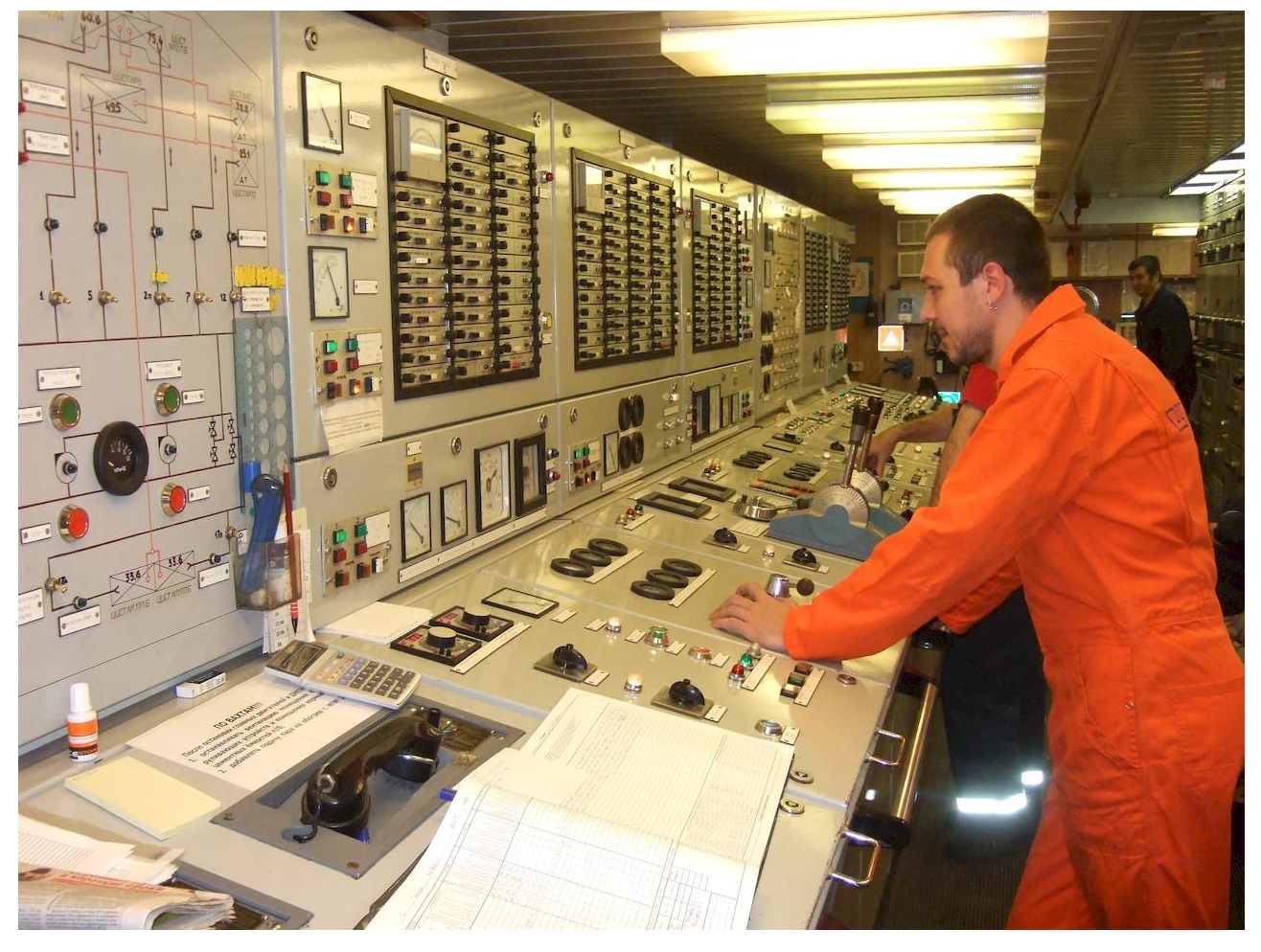 Educational Qualification: Pass/ appearing in 10+2 examination from a recognized Board/ University with Physics, Chemistry and Maths (PCM), with not less than 60% marks in PCM.
Educational Qualification: Pass/ appearing in 10+2 examination from a recognized Board/ University with Physics, Chemistry and Maths (PCM), with not less than 60% marks in PCM.
AND
Should have passed with not less than 50% marks in English as a separate subject at either 10th or 12th standard.
Age: Not more than 25 years.
Medical: Use of corrective lenses permitted but the maximum permissible limits at entry are +_ 2.5 with no colour blindness.
NOTE : However DG Shipping have made guide line for different entry but some shipping companies/ Institute have their own criteria for their intake. It is our advise any person who wishes to join merchant navy should check his eyesight and color blindness test get done from some specialist doctor before applying. For more information, you can contact the concerned authority or log on to www.dgshipping.com.
Fee for Merchant Navy’s Different Courses
Fee for Deck Cadet (DG+IMU scheme) between Rs. 4 Lacks to 6.50 Lacks as per training institute, for B.S. Nautical Technology, between 11 lacks to 13 Lacks as per institute, for 04 year Marine Engineering (TME), between 12 lacks to 14 Lacks, for Graduate Mechanical Engineering (GME), between 3 Lacks to 4.5 Lacks. This is a compulsory residential program, so the fee is inclusive of Boarding/ Lodging, Tuition fee, Books, Uniforms, CDC etc. For the STCW courses which includes basic/ advanced modular courses, Simulator based courses, Competency courses, Re validation courses and value added courses are differ from institute to institute or company to company.
Note: The fee given above is only for information and subject to change as per Institute/ Company. However the amount is almost same for different courses but for more information you can contact the concerned authority or log on to www.dgshipping.com.
Join Merchant Navy
Some of Our Latest Selections in Merchant Navy
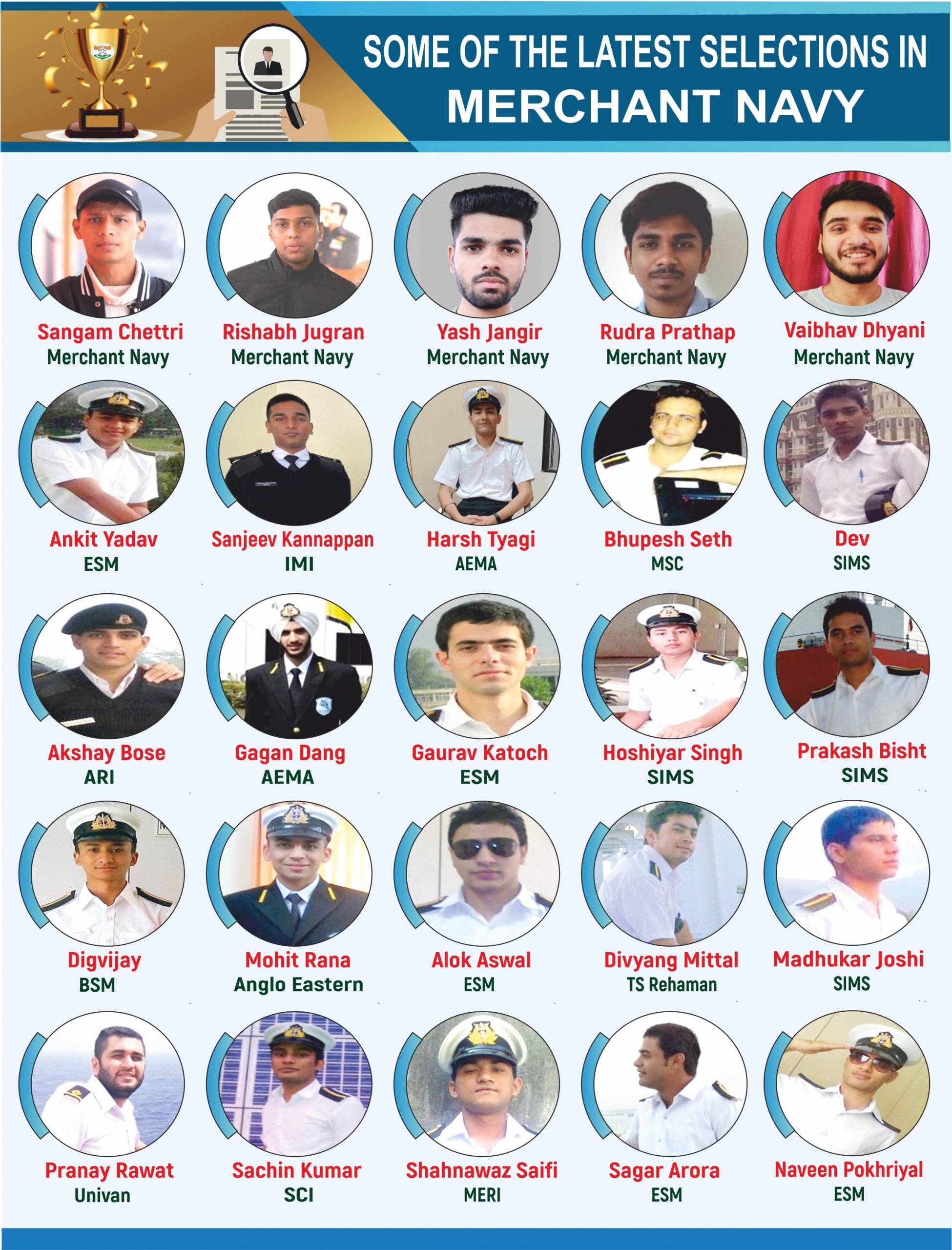
Some of Our Latest Selections in Merchant Navy

************
Deck Cadet
Introduction: Embark on a rewarding career journey as a deck cadet, where every day brings new horizons and challenges. Deck cadets play a crucial role in the maritime industry, learning the ropes of navigation, safety protocols, and ship operations while gaining invaluable hands-on experience at sea.
Why Choose a Career as a Deck Cadet?
- Adventure Awaits: Explore the world’s oceans and travel to exotic destinations.
- Career Progression: Deck cadetship serves as the first step towards becoming a certified officer in the merchant navy.
- Competitive Salaries: Enjoy lucrative earning potential and benefits in a globally recognized industry.
- Continuous Learning: Gain practical skills, technical knowledge, and leadership abilities under the mentorship of seasoned professionals.
- Global Opportunities: Join a dynamic industry with opportunities for international travel and cultural immersion.
What Does a Deck Cadet Do?
- Navigational Duties: Assist officers in plotting courses, maintaining charts, and monitoring weather conditions.
- Safety Protocols: Learn lifesaving techniques, firefighting procedures, and emergency response protocols.
- Deck Operations: Participate in mooring, anchoring, cargo handling, and vessel maintenance activities.
- Team Collaboration: Work closely with fellow crew members to ensure the safe and efficient operation of the vessel.
- Training and Development: Engage in structured training programs onboard and ashore to enhance skills and knowledge.
How to Become a Deck Cadet:
- Educational Requirements: Obtain a high school diploma or equivalent qualification with a strong background in mathematics, physics, and English.
- Training Programs: Enroll in a recognized maritime academy or training institution offering deck cadet training programs.
- Certifications: Acquire essential certifications such as Basic Safety Training (BST), Personal Survival Techniques (PST), and Proficiency in Survival Craft and Rescue Boats (PSCRB).
- Sea Service: Gain practical experience through onboard training placements on merchant vessels.
- Licensing: Obtain the necessary licenses and endorsements to progress from deck cadet to officer rank.
Start Your Journey Today: Are you ready to set sail on an exciting career path as a deck cadet? Explore our comprehensive resources, training programs, and job opportunities to launch your maritime career. Join the ranks of skilled professionals shaping the future of the global shipping industry.
Conclusion: Embrace the thrill of the high seas and the promise of a fulfilling career as a deck cadet. With dedication, perseverance, and a passion for adventure, you can chart a course to success in the dynamic world of maritime navigation.
RANK IN MERCHANT NAVY
Being in a job that requires an immense level of professionalism, wherein any mishap has adverse consequences, the merchant navy rank system makes the working process smooth and efficient. The hierarchy in the merchant navy establishes a decorum, a healthy working framework, easy learning for juniors, healthy communication between different shipping departments, and much more.
As mariners come from and sail all over the world, so it is very essential to have merchant navy ranks that must be universally accepted. This ensures better coordination among sailors to give and follow commands from respective ranks. The pride, responsibility, and uniform of the respective ranks of merchant navy is still the affection of many seafarers to choose it as their most prominent career option.
There might be some changes depending upon flagship and shipping company in the nomenclature and work assigned to specific rank holders. Generally, the ship’s working has been divided into three subdivisions, termed as –
◘ Deck department
◘ Engine department
◘ Catering department
Whenever a task is assigned either in the deck or the engine department the men are divided into two sub-divisions to accomplish it in the best manner, which are –
◘ Officers
◘ Rating rank
Deck Department & Rank
The bridge is the main hub of navigation and watchkeeping governed by the deck department and headed by the captain or the master. Advanced and critical machinery plays a major role in the proper and safe navigation of a vessel.
Seafarers highly skilled in navigational, cargo handling operations, and berthing operations are under the deck department.

CAPTAIN :
The Captain (or the Master) is the most superior authority of the vessel. He is accountable for all the jobs on ship, that are achieved onboard. The Captain is always in command whenever onboard and is accountable for running the ship under a certain set of rules and regulations. The Captain is entrusted to ensure optimal functionality, bearing minimal expenses. The captain is solely responsible for any mishaps when onboard.
THE CHIEF OFFICER / FIRST MATE :
A Chief Officer stands in the position of the Master in the absence of a captain. He accomplishes the orders of the master and is also the executive head of the deck department. He looks after the vessel’s crew; he has been given a task to train deck cadets onboard. The Chief Mate has a hectic schedule not only when the ship is at sail, but also when the vessel is at the port. There are many more responsibilities for which the chief mate is in charge, on a ship like fire prevention system, security instruments, accommodation functioning also several onshore operations such as cargo gearing, berthing, etc. are accomplished under the surveillance of Chief Officer.
Generally, the Chief Mate is so busy in cargo operations ashore that he has no time to get indulged in port watch duties. Although when onboard he is on safe navigational watches between 0400 hours to 0800 hours and also between 1600 hours to 2000 hours.
SECOND OFFICER / SECOND MATE :
The Second Mate looks after the charts, their publication onboard, and tries to keep them up to date. He also plays a major role of a medical officer on board, with all medical services under his control.
Every deck rank holder has a specific time of watch onboard and on ports, so the second officer has to keep navigational watch between 1200 hours to 1600 hours and then from 0000hours to 0400 hours. Generally, when on port his duty time is from 1200 hours to 1800 hours and 0000 hours to 1200 hours.
THIRD OFFICER / THIRD MATE :
Third Officer regulates the bond store onboard and maintains most of the port documents required by the master. The third officer on a vessel is also in charge of all Fire Fighting Appliances (FFA) and Life Saving Appliances (LSA) like Fire Extinguishers, Portable Foam Applicators , Fire Man Suit and so on.
Being an Officer on Watch (OOW), he is also assigned with a specific time frame for a safe navigational watch which is from 0800 hours to 1200 hours and again in the evening from 2000 hours to 0000 hours.
DECK CADET :
He assists the OOW in his learning. Deck cadets are the fresh, enthusiasts, filled with a feeling of learning every bit, when at work. He has to learn as much as he can to become a better officer in the future and clear exams with what he had learnt onboard.
He has been given a task in such a manner so that he can gradually learn the working of several critical types of equipment on bridge and can later confidently appear for his examinations.
Deck Crew

BOSUN :
Bosun is the chief of the rating section in the deck department and does the job assigned to him with the cooperation of the Chief Mate.
ABLE SEAMAN :
Able Seaman also possesses merchant mariner’s document as per the advance nautical terminology which makes him able to assist deck department.
ORDINARY SEAMAN (OS) :
OS is assigned multiple tasks such as cleaning the deck, scaling, buffing, often painting superstructure. Wiring, rigging, splicing wire, overhauling are some more activities undertaken by OS. Under the Bosun or the Chief Mate, OS also manages cargo operations.
TRAINEE ORDINARY SEAMNAN :
A Trainee Ordinary Seaman is just like a deck cadet but for rating ranks.
Engine Department & Rank
Mariners engrossed in the engine and its respective machines’ maintenance come under the engine department. Marine engineers take account of the fuel, all the quantities needed for propelling ships and also ensure smooth and efficient working of the machineries. Marine engineers and rating persons instilled with special skills are the most prominent asset to propel vessels smoothly and efficiently. Hence it can be easily understood how such a complex functioning of the vessel can be accomplished in a safe and efficient manner with the division of ranks in the merchant navy.

THE CHIEF ENGINEER :
He is responsible for the engine department. Chief Engineer keeps strict instructions for the management of pollution caused by ship’s machinery. He monitors ships’ auxiliary machineries and keeps track of the performance of the main propulsion system. He transfers regular reports of bunkering, fuel and lubricating oil and other fluid, etc. to the company’s headquarter. Reporting any sort of damages in machineries or any other technical issues arising has to be done by the chief Engineer.
THE SECOND ENGINEER :
The second engineer is assisted by other junior engineers for the day-to-day work in the engine department and has been given a special task to train engine cadets with ship machineries. Frequently the second engineer gives daytime watches in the engine room. He also looks after the documents, copies, and lamination work assisted by the fifth engineer. A highly skilled and specialized Second Engineer is the heart of the engine room, if he has good troubleshooting and leadership qualities then people in the Engine Room have a good time.
THIRD ENGINEER :
Along with the daily Engine Room rounds, the Third Engineer is responsible to check for the machines under the surveillance of the Chief Engineer. The fire room, boiler, and auxiliary machines are the responsibilities of a third engineer. Generally, Boiler and Auxiliary Engines are also the machines looked after by the Third Engineer. All the pump lines, emergency pump lines, provision reefer, and ship spares and stores are also managed by a third engineer. Generally, the duties of the Third Engineer vary from company to company and are clearly recorded in Company SMS
FOURTH ENGINEER :
The Fourth Engineer’s duty is to follow his Engine rounds schedule in the Engine Room and manage the working of machines assigned to him. Generally, a Fourth Engineer looks after Purifiers and Compressors on the Ship. Usually, the Fourth Engineer reports to the second engineer. The machines on which he works might differ from ship to ship. On command, his duty is to manage the main propulsion system and water system. Generally, the fourth engineer is also expected to provide medical aid, operation of steam and diesel driven plants and HAVC (heating, ventilation, and air conditioning).
FIFTH ENGINEER / ENGINE CADET :
He is mainly on board to learn under the guidance of a Second Engineer. His duty is to take soundings, go on Engine round duties, do document work all under the surveillance of senior officers. He also changes oil filters, manages workshop tools, assembling, cleaning, and dismantles the main air compressor, air purifier, and sewage plant under the supervision of a senior engineer.
ELECTRICAL OFFICER (ETO) :
One of the most important persons onboard. He looks after the electrical and technical aspects onboard. The advanced, unmanned ships (UMS) have special requirements of an ETO, as such ships have immense electrical requirements and computer-controlled machines. With automation becoming a great asset in running a ship, the role of an Electrical Officer is becoming dominant each day.
FITTER :
Fitter makes sure that all the watercraft components and materials are fitted properly or else he does so with welding or workshop tools. He must be specialized in construction and assembling parts of the machineries. Fitting is an art, and a good fitter is a master of it, thus work becomes relaxed when under the hand of a skilled fitter.
MOTORMAN / OILER :
Smooth and efficient working of machines requires proper oiling from time to time, which is the job of a motorman (oiler). Moreover cleaning the Engine Room and also supporting the duty engineer with daily rounds is a very important task of an Oiler.
WIPER :
He is responsible for cleaning the machineries and engine areas, he also assists the engine officers as per their command. The wiper is an ongoing rank to become an oiler. Though, not all Ships have a Wiper onboard.
Catering Department and Rank
Where there will be people, meals of proper nutrition will be necessary for survival. The catering department is employed for cooking and other housekeeping tasks for the crew. Generally, the catering department is headed by a Captain. The number of people employed under the catering department depends upon the type of ship-like, large ship, small ship, or passenger ship.
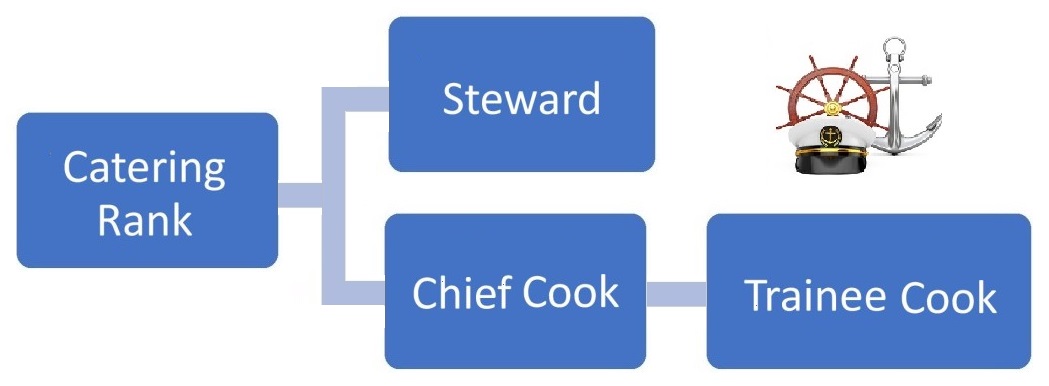
THE CHIEF COOK :
The Chief Cook is in charge of preparing meals on time for the crew onboard. He also heads the food store. It is the Chief Cook’s duty to check for the cleanliness of the galley area and the equipment used to do so. The Chief Cook also supports the third mate in maintaining a stock of food items and reporting to the Master. Dining together onboard is the only social quality free time together, here the Chief Cook spreads the fragrance of fondness with his delicious and wide variety of food.
TRAINEE COOKS :
He assists the Chief Cook in preparing meals and maintains a record of the food stored onboard. Trainee Cook is not so common now, as the crew has also been reduced as of advanced unmanned machineries.
STEWARD :
Steward serves the meals, cleans the office area, maintains records of grocery, food costing, and the documents along with the Chief Cook. Few company officers have the privilege to get their cabin cleaned by stewards.
************
Types of Commercial Ships in Merchant Navy
Commercial ships are various kinds of ships that transport cargo and passengers to different destinations. Commercial ships come in a range of sizes and shapes, to enable them to complete their intended purpose or duty. From freight liner ships to oil tankers, these ships are all designed to serve different purposes.
Different types of commercial ships can be classified in three ways: cargo capacity, weight, and size. The number of canal locks a ship may pass through is limited by its maximum dimensions, such as length and beam (beam); water depth (draught) is a constraint for canals, shallow straits, and ports; and height is a restriction for going under bridges. Ships are often custom-built for the operation, including cranes and other loading and unloading equipment, and come in a wide range of sizes.
These types of commercial ships are further classified into two categories based on the services they give to the industry: liners and tramp services.
CRUDE OIL TANKER :

Crude Oil Tankers transport a vast amount of crude oil from the extraction site to refineries, where it is further processed. Generally, a Crude Oil Tanker carries one cargo grade at a time. Crude oil is categorized into different varieties (crude grades). A crude oil ship normally transports just one cargo grade at a time. These tankers are substantially bigger than all the other types of oil vessels, ranging in size from 50,000 to over 500,000 tonnes deadweight, and hence they frequently load and unload at offshore buoys and terminals. An extensive global fleet of Crude Oil Tankers forms the backbone of the global economy.
SHUTTLE TANKER :
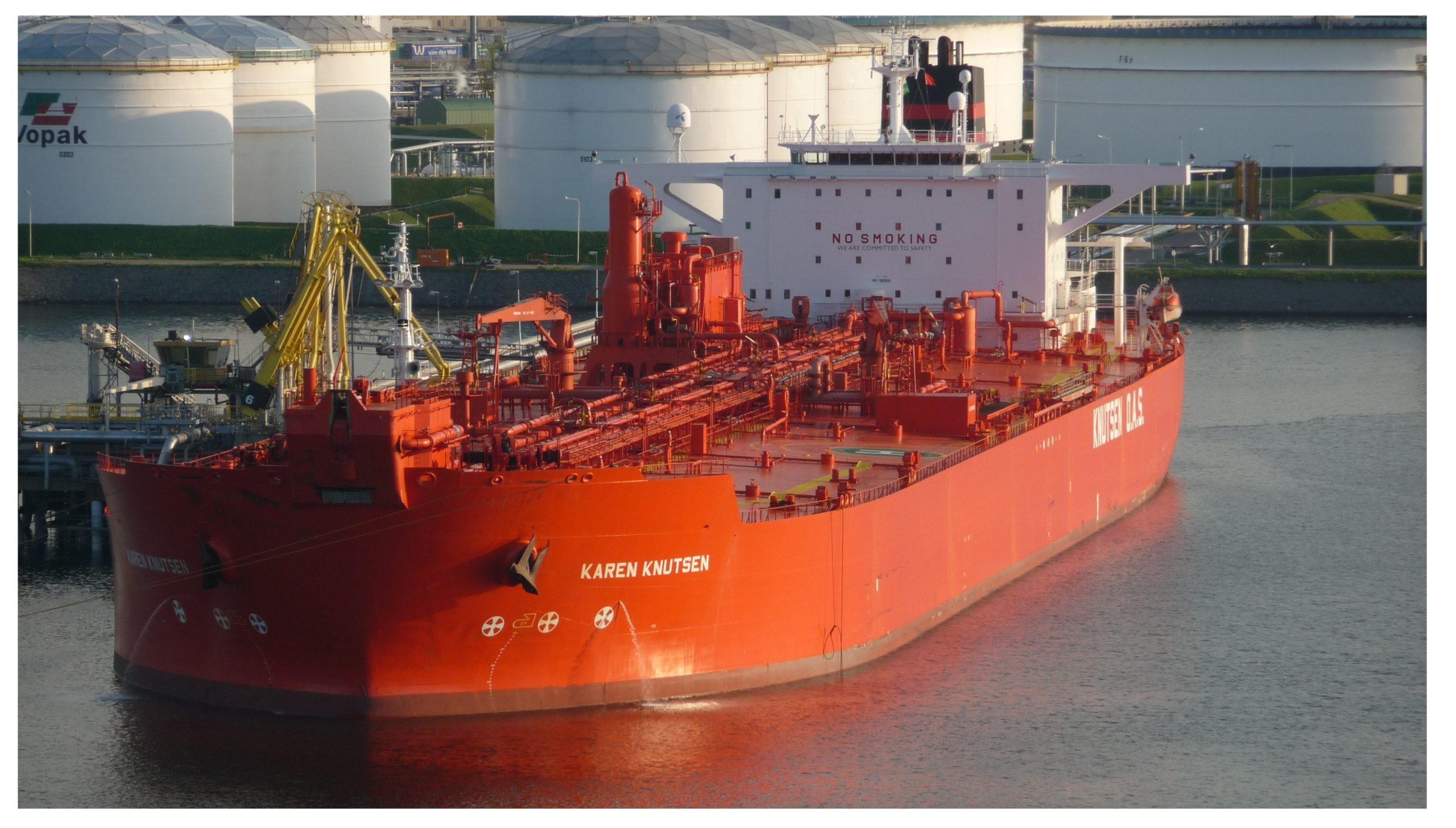
A Shuttle Tanker is a type of ship that delivers oil from offshore oil fields to land-based refineries, and it is widely used as a substitute for pipelines. It comes equipped with dynamic positioning to keep its location about the field, off-loading system of pipelines, and several safety measures to ensure that crude oil is handled safely. Shuttle Oil Tankers have also proven to be much safer than traditional crude oil tankers. Operators choose them because they are more flexible than pipelines that are attached to a single receiving point. Additionally, they possess the option to segregate the oil, unlike pipelines which need the entire network to be shut down. Shuttle tankers are relatively easy to maintain.
PRODUCT CARREIR :

Product tankers are smaller tankers with a capacity of up to 35,000 tonnes that are usually built to carry chemical cargoes, necessitating special design and equipment such as stainless steel cargo tanks, corrugated bulkheads, deep well pumps, and more complex piping systems. Product tankers transport refined oil (of various grades) to a location near the final market. Epoxy is used to coat the tanks, which protects the cargo while also making the tank easier to clean. Among the products carried are petroleum, jet fuel, diesel, asphalt, lubricating oil, and tar. Smaller tankers are also used to transport non-petroleum bulk liquids like molasses and palm oil.
CHEMICAL TANKER :

The deadweight of chemical tankers ranges from 5,000 to 40,000 tonnes, and they frequently incorporate specialized cargo systems, tailored to transport a variety of liquid chemicals. Chemical tankers are built to maintain the uniformity of the chemicals they transport. Coatings of particular compounds sprayed on these tanker ships influence the type of payload that may be transported. To guarantee that the cargo retains its purity when placed into a multi-purpose tank, these systems may also contain heating or cooling apparatus, as well as modern cleaning systems.
LIQUIFIED GAS CARRIER :
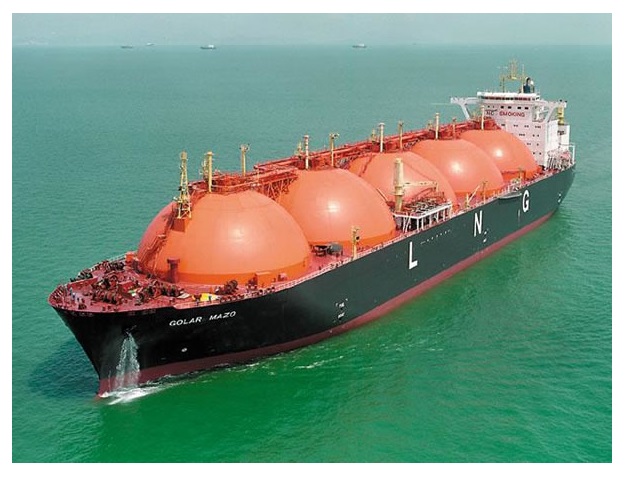
Gas tankers are tankers that are specifically intended to transport various types of gases in bulk. These tankers are more technologically advanced than any other form of vessel, including bulkers, containers, and other types of tankers. Gas carriers can be divided into five groups based on the type of cargo transported and the conveyance situation. The distribution of these alternative energy sources to clients all over the globe helps to meet the worldwide market demand for energy and therefore contributes to the global energy supply chain. Cargo tanks are normally spherical for robustness, since they are used to transport Liquefied Petroleum Gas (LPG) or Liquefied Natural Gas (LNG) under pressure. IMO’s International Code for building and outfitting of ships carrying liquefied gases in bulk, specifies design and construction standards to ensure the ships’ safety.
CONTAINER SHIP :
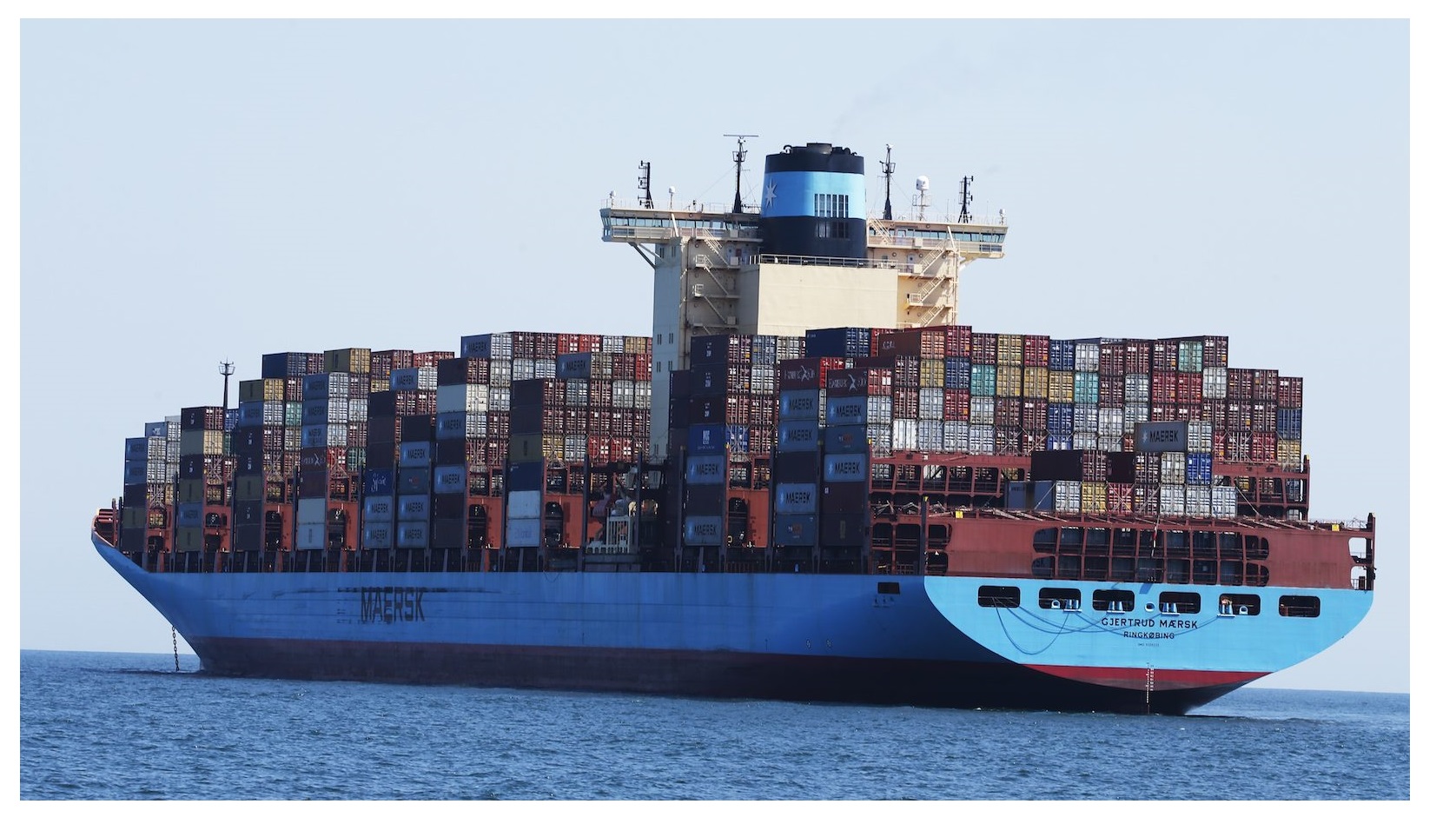
Container ships are among the largest boats on water, and are mostly employed on liner routes. Containers have become a primary mode of transport for manufactured products throughout the world, and are of a standard size to make shipping easier. The containers are inserted onto vertical frames or guides in their cellular holding. Containers are often loaded either by specialized cranes, or general-purpose cranes equipped with container lifting accessories. While self-loading and unloading is possible on some small cargo ships. Container ships are different from other dry boats, in the way that they are frequently rented on long-term charters by big liner firms, who then let the end clients set the fees for each container. Large container ships are limited to specific ports across the world due to their size, and they are also unable to pass through some locations due to drought, or in the case of canals, beam limits.
REEFER SHIP :
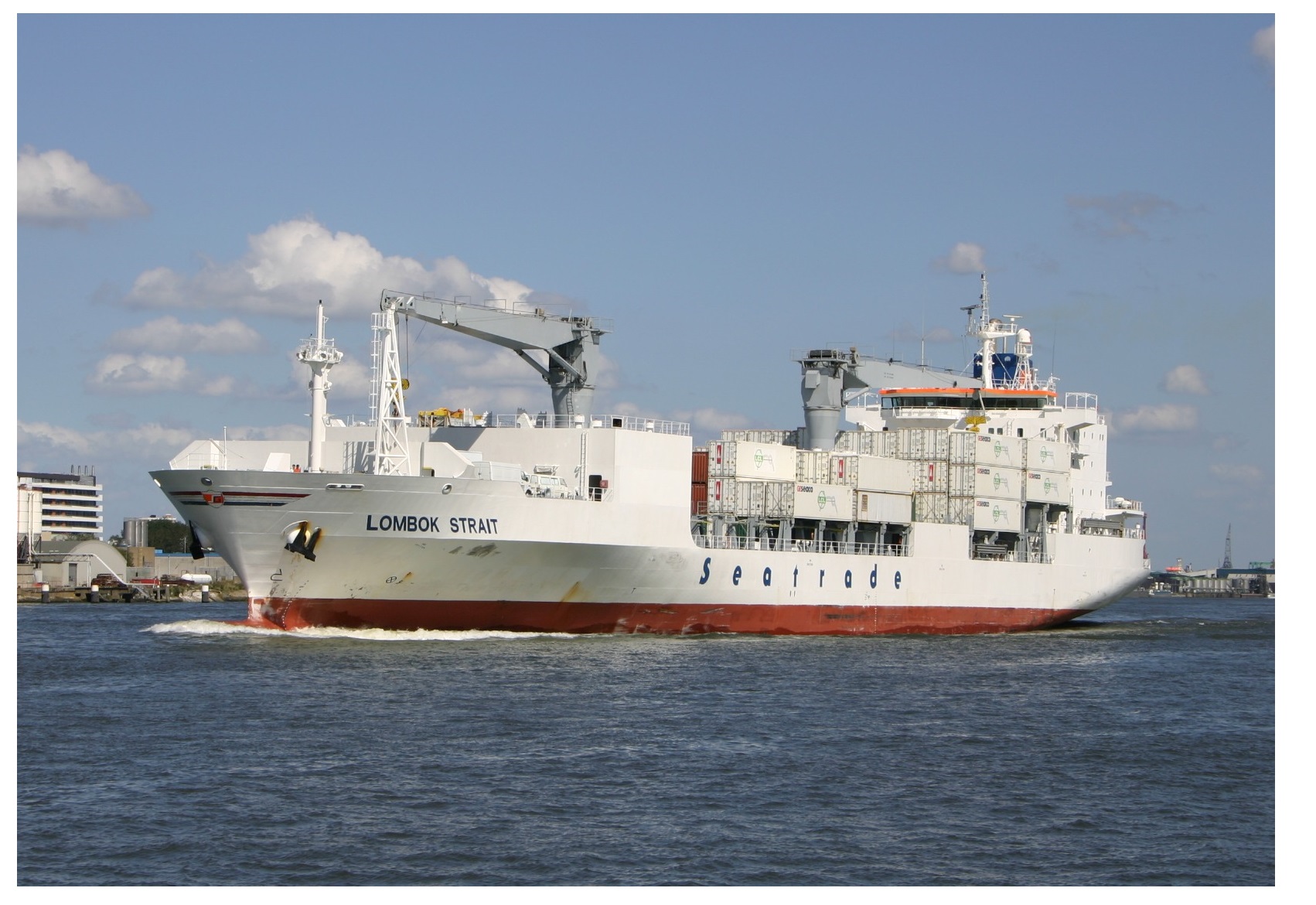
Refrigerated goods and perishable commodities that require particular climatic conditions, such as fruit or meat, are transported in “Reefer Vessels.” A reefer ship has specially insulated holds, into which cold air is piped at the correct temperature for the cargo.
Most traditional reefer boats have now been replaced by the use of chilled containers carried on board Container Ships. Reefer ships have different construction, power generating, and electrical distribution systems than regular cargo ships.
BULK CARRIER :
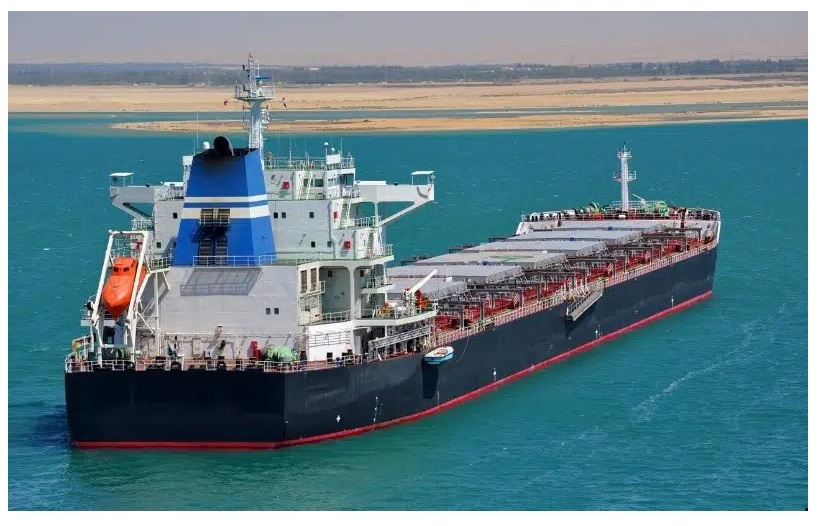
Bulk carriers carry unpackaged dry goods having a high weight-to-cost ratio, such as coal, grain, and ore. A bulk carrier has no walls, yet the middle deck is installed to keep the cargo from being pressed. To keep the cargo from tilting to one side, it contains a topside tank and a hopper tank. These ships are separated into multiple different holds, each of which is protected by a hatch. Cargo is loaded at the port using a conveyor and spouts, or a crane and grab. Some bulk carriers are outfitted (typically with a crane between each hatch) to allow goods to be loaded and unloaded at ports, without the need for shore equipment. A Vast fleet of Bulk Carrier acts as an important indicator of global trade.
BREAK-BULK CARRIER :
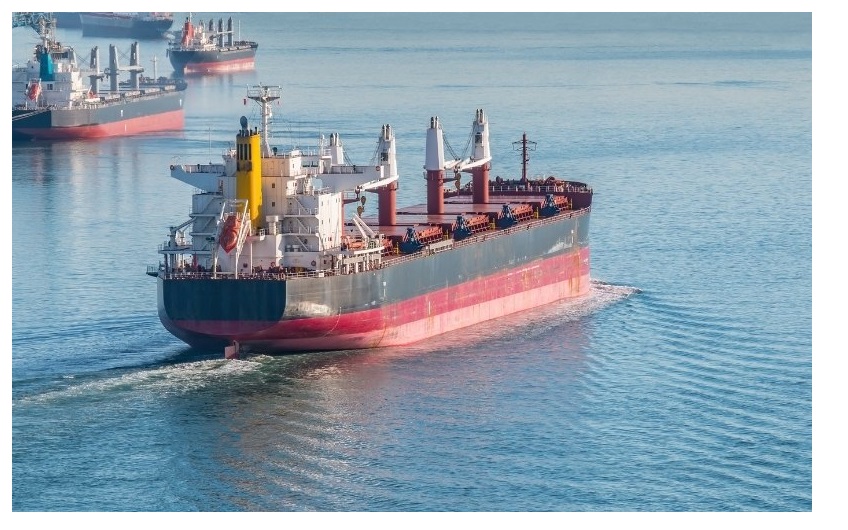
Break-Bulk Carriers are used for transporting bulk cargo without putting the cargo into shipping containers. These ships may use other storage mediums like pallets, etc. Although specific handling facilities for such things may exist, the majority of loading and unloading is done with cranes, straps, or slings. Whereas, when hauling loose and irregular cargo, the crew and port stevedores pack the cargo. They do not require the availability of a specific berth or terminal. They can be further classified into Single Decker, Tween Decker, and Box Holds, to name a few. General cargo boats are still in use across the world, despite being mostly superseded by the revolution brought down by containerization. The ‘Freight Ton’ or ‘Revenue Ton’ method is used for computing freight rates for breakbulk shipments.
RO-RO VESSELS :

RO-RO (roll-on/roll-off) ships are cargo ships that transport wheeled products such as cars, trucks, semi-trailer trucks, buses, trailers, and railway carriages. These ships allow freight to be driven right on and off, making it a conducive mode of transportation. Their classifications include PCC (Pure Car Carriers) and PCTC (Pure Car & Truck Carriers), all of which fulfil the same purpose. In contrast to shipping cargo, which is determined by multiplying the cargo length in meters by the number of decks and lanes, Ro-Ro freight is measured in lane meters.
OFFSHORE VESSELS :
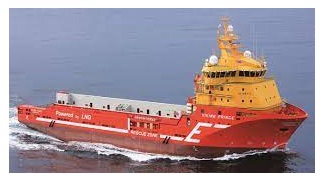
Offshore Vessels are support ships, that are primarily designed to serve the offshore oil and gas sector, by performing certain specialized tasks on the high seas. These are used for several tasks, including oil exploration and drilling, as well as transporting supplies to excavation and construction units on the high seas. These may also assist in the transit of crewing people to and from the high seas’ operational venues as required. Offshore operators may also deploy lodging, construction, service, production, or storage units in addition to drilling units. Offshore boats are among the most technologically advanced vessels, and are required to carry out precise tasks in extreme circumstances while also assuring the safety of all individuals involved.
CRUISE SHIPS :
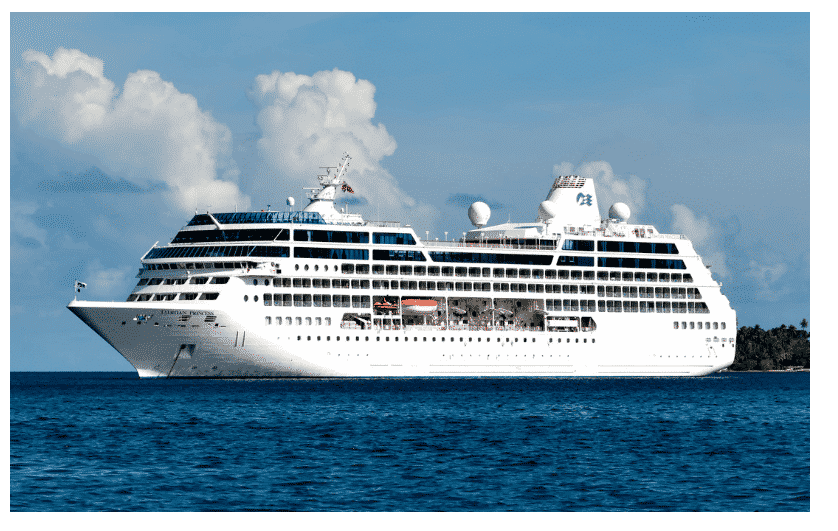
Cruise Ships are designed to provide customers with housing and entertainment, while specifically focussing on onboard amenities and comforts. Cruises are designed to transfer guests between ports according to a holiday itinerary, rather than from one location to another. The largest cruise ship can accommodate over 6,500 guests alongwith 2,000 crew members, making the cruise business a major source of employment generation in the Marine Industry.
The cruise business is quickly expanding all over the world. Since 1990, the total number of passengers has increased by 7.5 percent each year, from 3.7 million to 32 million, which means it has grown at double the rate of the worldwide tourism business.
TUG SHIPS :
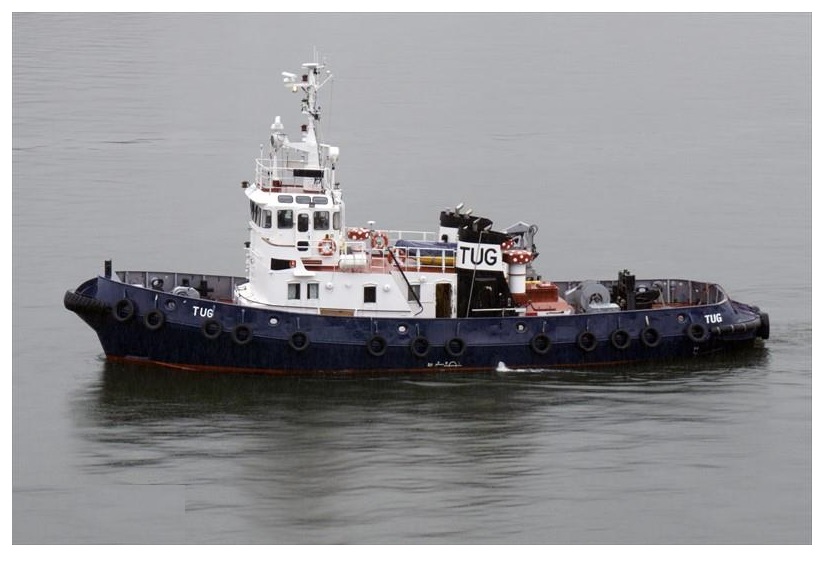
Tugs are small but strong ships, that aid in navigating bigger ships. Harbour tugs are used in ports all around the globe to help in berthing, unberthing, and moving huge or difficult-to-move boats, as well as transporting barges, floating cranes, and personnel within port boundaries. As deep-sea rescue and salvage tugs, larger tugs are stationed at strategic locations. Tugs are also employed to transfer large structures from one port to another, such as offshore platforms and floating storage units.
************
ADVANTAGES OF MERCHANT NAVY CAREER
An Early Financial Independence :
Young seafarers are paid quite well in US dollars which are comparatively higher than their fellows onshore in other industries. Most shipping companies offer excellent packages, incentives, and benefits right from the start of your career that is comparable to or superior to any other industry in the world. The cost of joining, travel and flights at the time of sign-on and sign-off is paid by the company itself, apart from the high income which you get in Merchant Navy. Hence young seafarers get early financial independence in Merchant Navy.
Long Vacations :
Since the profession of the Merchant Navy requires long working hours, the vacations offered to the professionals of the Merchant Navy are equally compensatory. Long vacations in Merchant Navy is definitely a privilege for seafarers. They themselves decide their availability for the next contract. This allows seafarers to enjoy the best of both worlds: land and water. A vacation of more than 3-4 months is definitely long enough to relax and indulge in all your passions, isn’t it? The vacation a sailor gets is in its purest form, there is absolutely no job stress while a sailor is at home and you can fully enjoy time with his family or pursue his/her passion. The people with enthusiasm to work hard and a will to live well should look for a career in the Merchantile Marine. It would be satisfying without the person experiencing any remorse in their chosen profession.
Enhanced Discipline and Professionalism :
A profession like a Merchant Navy gets you to work with different nationalities onboard which enhances the sense of adaptability and professionalism in seafarers. This also helps the individual understand and function better as a team player while learning the importance of different cultures and traditions. Merchant mariners must have good communication skills, along with the observance and maintenance of a high level of discipline. While working onboard, a person develops professionally and personally. This professionalism goes hand in hand with great responsibility towards the ship and its crew.
Tax Free Income :
A sailor’s income is taxed on the basis of his state of residence.
1. Resident Seafarers Income Tax:
The salary of resident seafarers or Merchant Marine personnel are taxed under the Income Tax Act of India. There are no income tax exemptions for seafarers.
2. Non-resident seafarers income tax (NRI status):
If a ship’s crew member works outside India for 183 days or more during the tax year according to his CDC (Continuous Discharge Certificate) or passport, his residency status will change to a non-resident sailor. The foreign salary of a non-resident seafarer/Merchant Marine personnel is not taxable in India. Hence Indian seafarers can have a tax-free income in Merchant Navy.
Adventure and Travel Opportunities :
This job is very adventurous since you can travel to different parts of the world. You could travel to almost any corner of the world without having to pay money out of your pocket. Other routine jobs in different sectors require people to work hard with very little time to roam freely around the world.
People who like nine to five jobs shouldn’t join the Merchant Navy. Commercial mariners can spend days exploring and seeing magnificent ocean views that soothing like none other. People spend hundreds of thousands of rupees on cruises to travel and you would do it for free because of your work profile.
Uniform and Respect :
It takes years of discipline, hard work, dedication, and work ethics for a maritime professional to become worthy of wearing the prestigious Merchant Navy uniform. These stylish uniforms not only fascinate the industry, but also those who have no idea what defines these maritime professionals. For some, the uniform is not just two pieces of clothing, but an experience, an achievement, and an attachment to an industry that made them what they are today. It is true that many young people dream of naval uniforms. However, you have to work hard to earn this privilege. Thus a uniformed job like the merchant navy helps you earn pride and dignity.
Temporary Seniors and Colleagues :
In a profession like Merchant Navy, where you work on a contractual basis, you work with different seniors in every contract. For deck crew, their captain would not be their permanent boss. Similarly, for the engine crew, their chief engineer would change in every contract or mid-sail. Here, in Merchant Navy you just have to bear a bad boss for a contract, chances are you won’t have to work under the same seniors again. On the other hand, if you are sailing with a good Chief Engineer or a Captain, unfortunately, he will also change in a few months.
Visitors
Student Selected
Courses
Faculties
Important Information About DDA

The motto of Doon Defence Academy’s is to serve the Country First.
Every year more than 5000 students enroll themselves for the different career prospective and DDA has given more than 12500+ selections in last 19 years.
Now it’s your turn…


